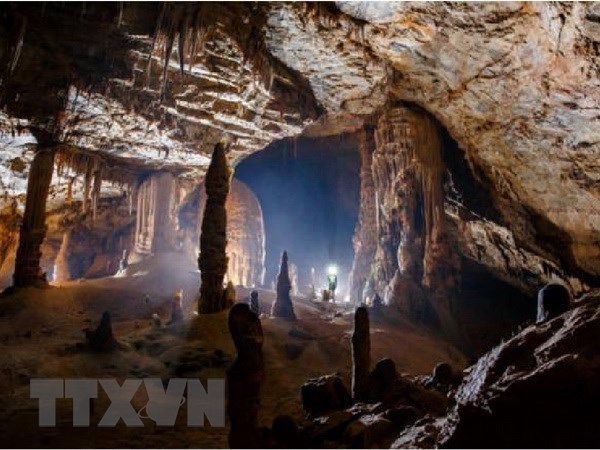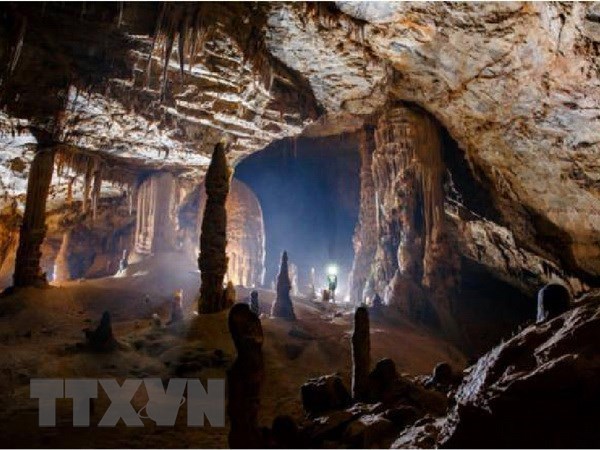
The number of tourist arrivals to Quang Binh province increased 18.4 percent to more than three million, including 129,700 foreigners, in the first nine months of this year.

A new cave in Quang Binh (Source: VNA)
The central province’s
tourism sector earned 3.3 trillion VND (141.37 million USD) in total revenue in
the reviewed period, according to the provincial Department of Tourism.
The achievements are attributed to the provincial tourism sector’s efforts to
strengthen management of tourism, tourism promotion activities both at home and
abroad.
Director of the Quang Binh provincial Department of Tourism Ho An Phong said
the sector will continue tourism promotion activities to fully tap its
advantages of sea and cave tourism, and call on businesses to create new
tourism development projects and unique tours to draw more visitors as well as
encourage their longer stay in the province.
Quang Binh will also work together with neighbouring provinces to establish the
connections for a tour route in the central region, further promote the full
exploitation of the Dong Hoi-Chiang Mai air route, and carry out the Dong Hoi
airport upgrading project, he added.
In 2017, the province received over 3.3 million visitors in 2017, up 70.9
percent over the same period last year.
In the first quarter of 2018, the province served over 727,000 holidaymakers, a
year-on-year rise of 12 percent, raking in 820 billion VND in tourism revenue.
In 2018, Quang Binh strived to greet 3.5 million tourists, including 120,000
foreigners.
Quang Binh has a 116.04-km coastal line and a 201.87 km border line with Laos.
The province is famous for its cave systems, incredible mountain scenery and
sprawling beaches.
It is home to the UNESCO World Heritage Site Phong Nha – Ke Bang National Park
and the world’s largest cave, Son Doong.
Source:VNA
A diverse chain of eco-tourism and resort destinations concentrated in Hoa Binh city and the districts of Tan Lac, Da Bac, and Luong Son… Along with the launch of several key high-quality resort tourism projects, these developments have reshaped the landscape and enhanced the appeal of Hoa Binh as a travel destination.
Boasting diverse terrain, a mild climate, and rich natural resources, Cao Phong district is increasingly asserting its place on Vietnam’s tourism map, attracting both domestic and foreign visitors. The district is renowned for its stunning landscapes, majestic mountains, a crystal-clear hydropower lake, and the unique cultural identity of local ethnic groups.
With its pristine landscapes, unique cultural heritage of Muong ethnic minority, and an expanding range of visitor experiences, Tan Lac district of Hoa Binh has fast become a captivating destination for both domestic and international tourists.
Until now, Sung village in Cao Son commune, Da Bac district remains the only Dao ethnic community in Hoa Binh province to develop a community-based tourism model. Beyond its untouched natural landscapes, cultural identity serves as the cornerstone attraction for visitors.
Alongside the diverse cultural identities of the Kinh, Muong, Tay, Thai, Dao, and Mong ethnic people, Hoa Binh province is also renowned as the "capital" of the northwestern Vietnamese cuisine, offering unique and distinctive dishes. At festivals, during Lunar New Year (Tet), or on significant family or community occasions, special dishes are prepared, leaving a lasting impression on visitors.
A Phong Linh (Yellow Tabebuia) flower garden in Thang village, Thach Yen commune, Cao Phong district is currently in full bloom, drawing a large number of visitors.



